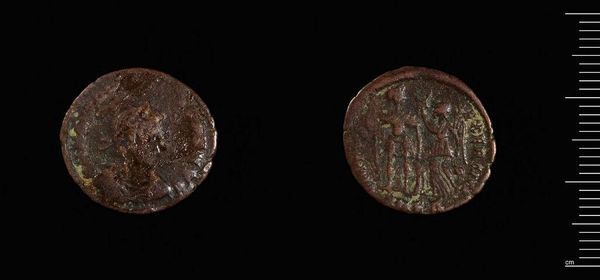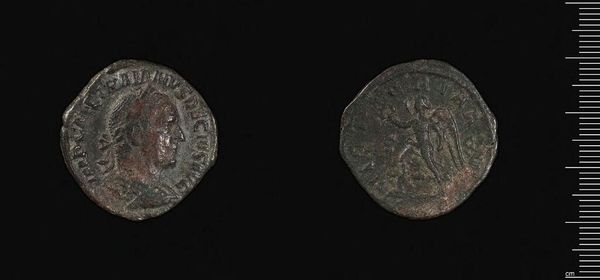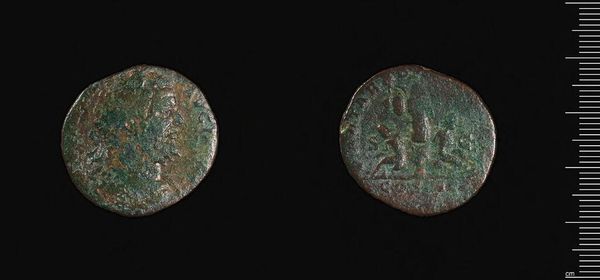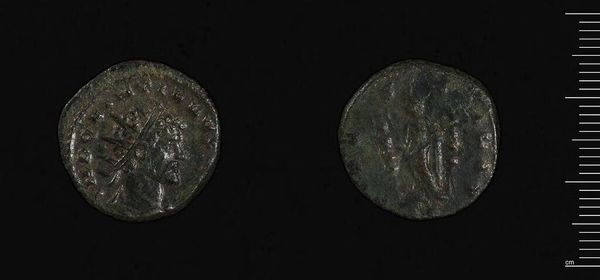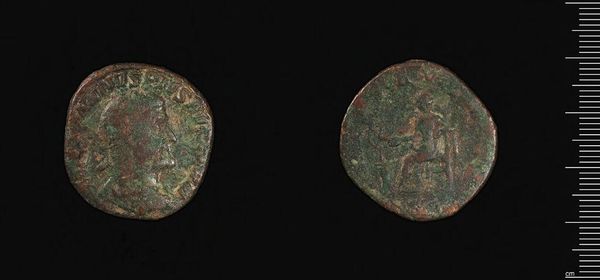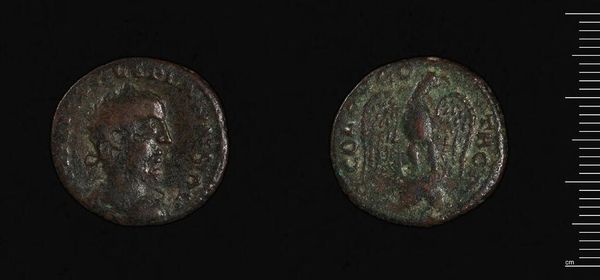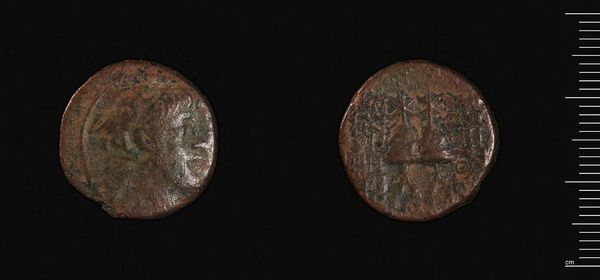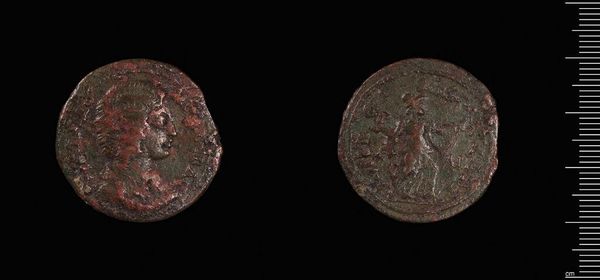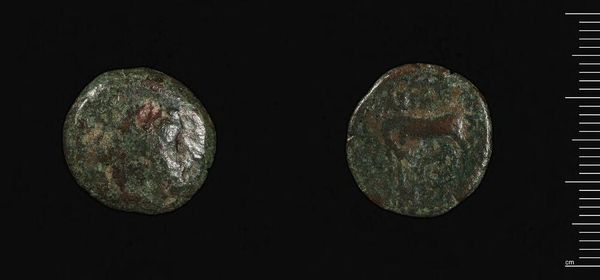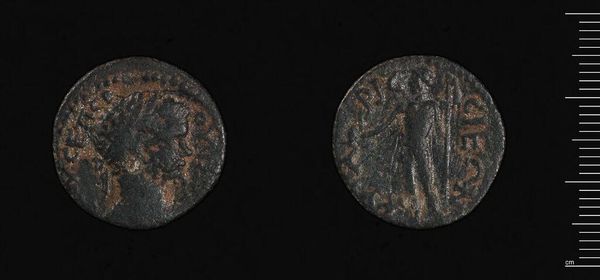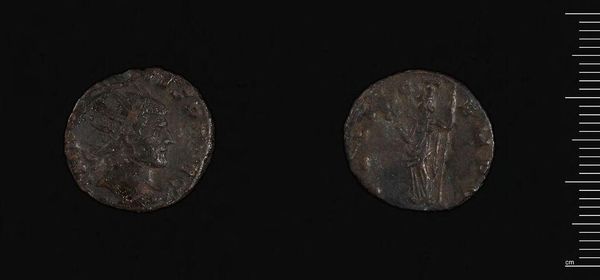
Dimensions: 2.31 g
Copyright: CC0 1.0
Curator: Let's examine this bronze coin, attributed to Licinius I. Notice how its worn texture speaks of countless transactions and journeys through time. Editor: Immediately, I'm struck by how the images, though eroded, still project imperial power. Can you tell me more about what we're seeing? Curator: One side depicts the emperor’s profile, likely meant to project strength and authority. The other possibly features a deity or a symbolic representation of the Roman state. These images were ubiquitous, reinforcing Licinius's rule. Editor: Right, and it reminds us that even something as small as a coin carried enormous political weight. Whose faces were valued enough to be literally carried by the masses? Who was excluded? Curator: Indeed, these coins served as a kind of propaganda, imprinting cultural memory. The imagery chosen wasn't accidental; it reinforced the emperor’s desired narrative. Editor: It's a potent reminder of how deeply embedded power structures can be within everyday objects. Even in their decayed state, the coins invite us to examine those structures. Curator: Exactly. This simple coin holds volumes about Roman authority and its visual language. Editor: Precisely. Examining these artifacts fosters critical reflection on power, representation, and the stories that persist across centuries.
Comments
No comments
Be the first to comment and join the conversation on the ultimate creative platform.

